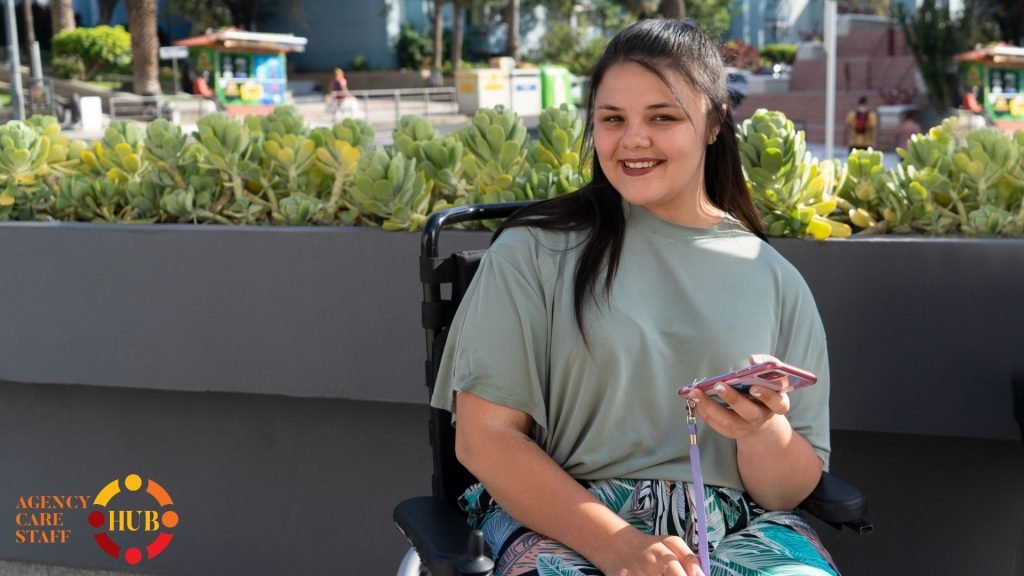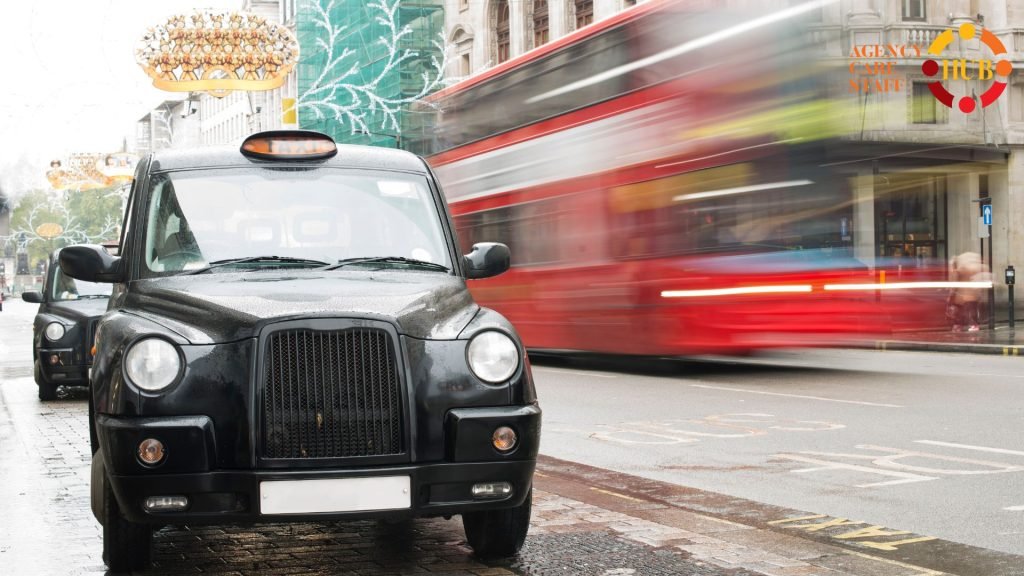How to Start a Wheelchair Accessible Taxi Company
How to Start a Wheelchair Accessible Taxi Company
1. Introduction
Ever had one of those ‘light bulb’ moments? Mine was on a rainy day in Corby. I saw an elderly lady struggling to get into a regular taxi with her wheelchair. That’s when it struck me – the immense potential of starting a wheelchair accessible taxi company. “I could put a business starter pack together!”. And I did. You can find it here: Wheelchair Accessible Taxi Company – Starter Pack. If you’re reading this, perhaps you’ve had a similar spark of inspiration. So, buckle up (pun intended), and let’s dive deep into turning that inspiration into a thriving business!

2. Understanding the Market
2.1 Importance of market research
As you know, we sell other healthcare related starter packs. We started over 200 businesses, so we know what we are talking about. Our first advice before you start a wheelchair accessible taxi company: do thorough market research. Visit hospitals, care homes, and special needs schools. Talk to people. Understand their frustrations and needs. Find local taxi companies, see what cars they use and how are they equipped. I was in town with my wife and by accident I parked wright next to a wheelchair accessible taxi. Guess What? While I was waiting for my wife I carefully “inspected” the taxi.
2.2 Identifying your target audience
For me, the eureka moment was realising that the potential clients aren’t just elderly wheelchair users. They are parents with kids on the spectrum needing regular school runs, people with learning disabilities, or elderly people wanting a quick visit to the park, a family member or the local shopping centre.
2.3 Gauging demand in your local area
London might have a higher demand due to its busy nature, but smaller towns might surprise you with their untapped potential. Remember, it’s not just about quantity but also the quality of service you can provide.

3. Legal and Regulatory Requirements
3.1 Necessary licenses and permits
Taxi companies are regulated by the local councils. Most local councils in the UK require taxi drivers and operators to obtain a special licence to operate. For wheelchair-accessible vehicles (WAVs), there are some additional specifications, training and tests. Each council might have slightly different rules. London for example, is even more heavily regulated.
Driver Requirements for Wheelchair Accessible Taxi Company
Essential Licensing & Documentation
- UK Driving Licence: It goes without saying, but before you even consider anything else, you must hold a valid UK driving license.
- DBS Clearance: A clear Disclosure and Barring Service (DBS) check is non-negotiable. It’s all about ensuring the safety of the passengers, especially given our specialty in transporting vulnerable groups.
- Medical Fitness Declaration: A clean bill of health is vital. Drivers must submit a Council-specific medical form, endorsed by a GP who has full access to their medical history. A note to remember: if there’s a delay in your application process, this assessment will only stand valid for three months.
Training & Assessment
- Driver Training: Comprehensive training to equip drivers with skills tailored for our niche service is crucial.
- Knowledge Test: The Council has two distinct knowledge tests. Part 1, mandatory for all, assesses English proficiency, general local awareness, understanding of vehicle conditions, highway code, and basic arithmetic. Part 2, compulsory for Hackney Carriage and Dual licence seekers, dives deep into local area specifics, route planning, and byelaws. If you’re eyeing multiple zones, be prepared to tackle a separate Part 2 for each.
- Safeguarding Training: Given our clientele involves vulnerable groups, all aspiring drivers must successfully attend and complete a Council-approved safeguarding session. The cost is on the applicant, and all details about its administration will be in your application pack.
- Driving Assessment – Practical Test: A practical driving test ensures your on-road skills are impeccable. If you’re keen on driving a wheelchair accessible vehicle, there’s an additional assessment. While the council will provide a list of approved test providers, the test’s administration and associated costs are on you. For those considering this, some extra training might be beneficial before diving into the test.
- Equality & Diversity Training: With diversity at the heart of our service, it’s only fitting that we require all our drivers to undergo and pass a Council-approved Equality & Diversity training. As with the Safeguarding training, costs fall on the applicant, and you’ll find all the nitty-gritty in your application pack.
3.2 Application Process Insights
To get your vehicle licence (or renew it), you’ll need to provide:
- The original V5 vehicle registration or new keeper’s slip (renewals exempted if no vehicle changes).
- A valid insurance certificate or cover note specifically for private hire or hackney carriage work.
- Relevant MOT Certificate and Council Test documentation from an approved garage.
- If you lease your vehicle, the corresponding agreement.
- Recent DBS proof if you’re not a present licensed driver with the council.
A pro-tip from someone who’s been there: If you’re renewing, start your application process at least six weeks before your current licence expires. Upon approval, the council will touch base for licence plate collection and, if necessary, a vehicle and document inspection.

4. Vehicle Selection and Modification
4.1 Choosing the right vehicles
Not all vehicles are created equal. A friend once bought a fleet of cars only to realise they weren’t suitable for modifications. Go for vehicles known for their spacious interiors and durability. Here are a few models:
- Fiat Doblo Maxi
- Ford Connect Freedom
- Peugeot Rifter Horizon
- Renault Traffic Autograph
- Volkswagen Caddy Vista
- Ford Tourneo Custom Independence
Check with the council the requirements about the age of the car. Some will state that the care must not be older than 4 years when you apply for the license.
4.2 Essential modifications for wheelchair accessibility
It’s more than just ramps. Consider a hoist, automatic doors, rotating seats, handles and proper restraint systems. The client must have enough space and not feel “squeezed in”. There are specialised companies across the UK that can equip your Wheelchair Accessible Vehicle (WAV) from A to Z, including safety warning stickers.
4.3 Safety regulations and quality checks
Of course, we have the MOT test, but beside this, the company that installed your hoist/ramp can give you all the details about quality checks and offer you a warranty. Always ensure your modifications meet safety standards. Regular quality checks can save a lot of future trouble. Imagine if your equipment fails and your client suffers an injury. The injury is bad enough and injuries should be avoided at all times but I am sure you understand the consequences if you can’t demonstrate that the safety checks are up to date.
5. Training and Staffing
5.1 Hiring trained drivers
When you are looking to hire your driver you are not just looking for someone who could drive. Don’t forget the type of clients you will serve. You need someone empathetic, that has good communication skills, patient, and skilled in handling your special vehicles. Always hire with this broader perspective.
5.2 Special training programmes
Even if they’re experienced, always invest in training for your drivers. For example, some people can have a natural flair for communication, but offering an Autism and Learning Disabilities training can truly enhance their skills and help them understand specific needs better.
5.3 The importance of sensitivity training
I’ve seen on LinkedIn a post where a mother tearfully shared how a taxi driver had impatiently handled her autistic son. Sensitivity training is non-negotiable. It ensures that your drivers treat every passenger with the respect and patience they deserve.

6. Marketing and Branding
6.1 Positioning your company
How you market is as important as what you offer. Position your company as not just a taxi service, but a thoughtful solution for those with special needs. This is where we come into play. We will make sure that you have a strong presence on the local market, with a modern brand that will stand out.
6.2 Building partnerships
I can’t stress this enough. Partnering with local schools, care homes, GP Surgeries, council, CCG, NHS, rehabilitation centres, Facebook parents groups, any other relevant Facebook groups, disability advocacy groups can be a game-changer for you. This can add credibility to your business and expanded your clientele.
6.3 Promotional strategies
Remember, you’re serving a niche. Tailored promotions, like discounts for hospital rides or special school packages, can make all the difference. For this type of business flyer distribution is a great way to market your business locally. Talk to us and we can teach you how to market your business properly.
7. Operational Considerations
7.1 Smooth booking system
Ever tried booking something and given up out of sheer frustration? I have! A seamless booking system is essential. Invest in an app or an easy-to-use online booking system through your website. We can execute both on a high level.
7.2 Ensuring timely service
Delays can be especially challenging for our clientele. Always ensure punctuality. It’s not just about business; it’s about respect.
7.3 Addressing specific needs
You will always have that client that needs a bit more time to settle in. Being aware and accommodating such specifics can make your business run smoothly and rides comfortable for your passengers. My point here is to gather as much information as possible about the client when taking the booking. Using a booking form template can help you achieve this. We can implement an online booking form on your website where clients can answer specific questions about their need before placing the booking.

8. Financial Planning and Pricing
8.1 Estimating start-up costs
Let’s face it; modifications can be pricey. Plan your finances meticulously. Factor in everything – from vehicle purchases to training costs. We estimated that starting your own Wheelchair Accessible Taxi business can cost up to £30,000. The biggest expense being of course the vehicle. Then you have the website, documents, marketing etc. The other option would be to buy a franchise. This will cost you about £45,000.
8.2 Setting pricing
While your services are specialised, pricing shouldn’t be exorbitant. Your local council will give you a guide price.
8.3 Funding and grants
I was pleasantly surprised to discover grants available for businesses enhancing community inclusivity. Look around; you might find financial support you hadn’t considered!
9. Challenges and Potential Solutions
- 9.1 Addressing potential roadblocks. There is some paper work involved but we can help with this. We can guide you throughout the process. Another thing to consider is the fact that it can take a while until you get all the licenses.
- 9.2 Importance of customer feedback. Please make sure that you offer the clients the possibility to offer you feedback. We can implement an online feedback form. Clients can fill it in anonymously, or leave their actual name.
- 9.3 Keeping up-to-date with accessibility standards and advancements. Your local council is your best partner in this case. A simple phone call or email will help you receive answers to your questions.

10. Conclusion
Starting a wheelchair accessible taxi service is more than just another business venture. It’s a step towards a more inclusive society. It’s about empowering individuals, granting them the freedom of movement, and reminding them that they’re valued.
For those ready to embark on this journey, remember that like all businesses, there will be challenges. But with every challenge overcome, there’s the unparalleled reward of making a tangible difference in someone’s life.
To those already in or considering this industry, we salute your spirit. May you drive forward with passion, adaptability, and the unyielding commitment to making our world more accessible to all!

Interested in starting a Wheelchair Accessible Taxi business?
- We have everything that you need. Find out more




I need more information about the business services.
Hi Peter. We have sent you an email to revb……@msn.com with more info. Please check.